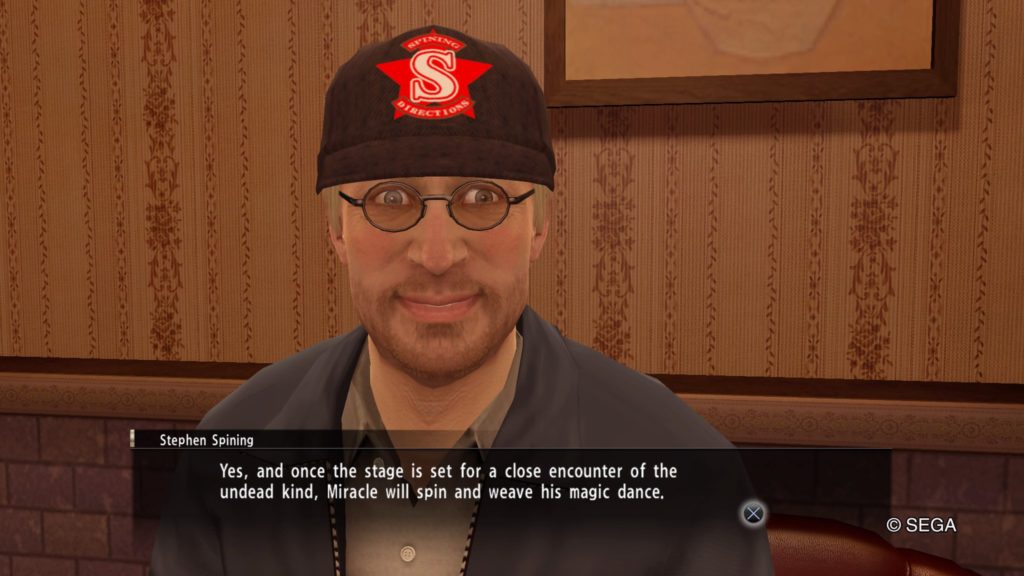- Genre: Adventure
- Platform: PS4
- Also Available On: Steam
TL;DR
- Fantastically gorgeous environment and great soundtrack
- Main quest line that’s entertaining to play, and gives you the right amount of push to continue seeing the new environments
- High end crafting and side quests are fundamentally problematic with the game loop as implemented
Yonder is a game that at its core feels like it was made by a group of artists. The attention to detail in the environment is up there with some of the best games available this generation. The soundtrack backing it is the right level of ambient orchestral music without getting in the way. All of this is tied into a fantastic implementation of a day/night cycle very reminiscent of its use in Breath of the Wild. However, once you go beyond the core story quest line, the lack of real depth to the game systems in place, and a crafting system that is more menu and resource frustration really shows the problems that come out in the game loop that’s available.
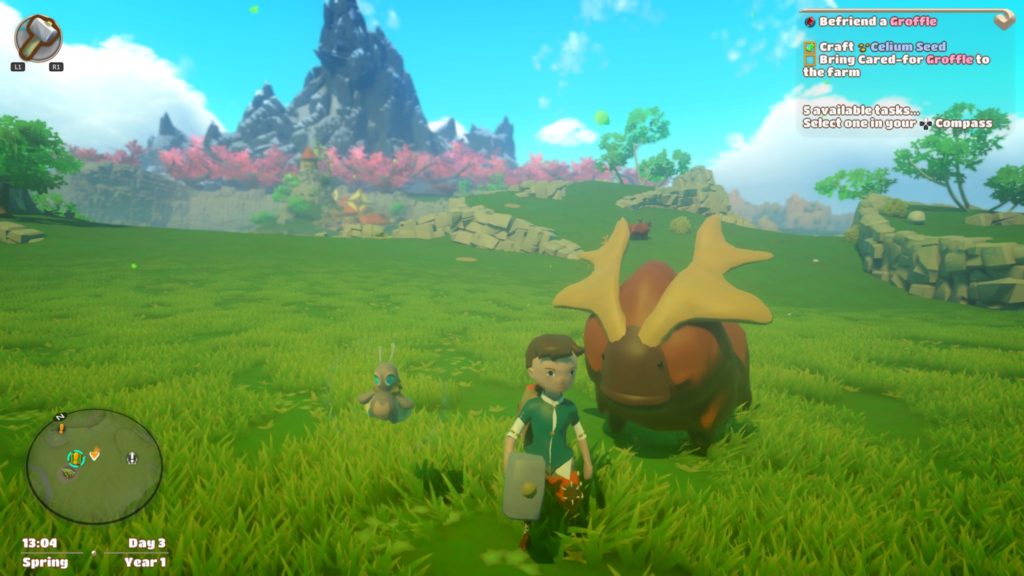
Right off the bat, it’s clear that this is going to be a beautiful game experience. After an initial intro scene and cave crawl, you immediately get out into an open field that gives you a vista of a large part of the island the game takes place on, and it’s astoundingly beautiful. The characters and animals around have a simple but effective style, and everything is fairly recognizable right off the bat. Each area that you go to throughout the game then has its own core visual theme, whether it’s the snowy areas as you climb the central mountain, the palm trees near the beach, or the sparse rock formations in the desert. Each area is just as great looking as the one you just had left.
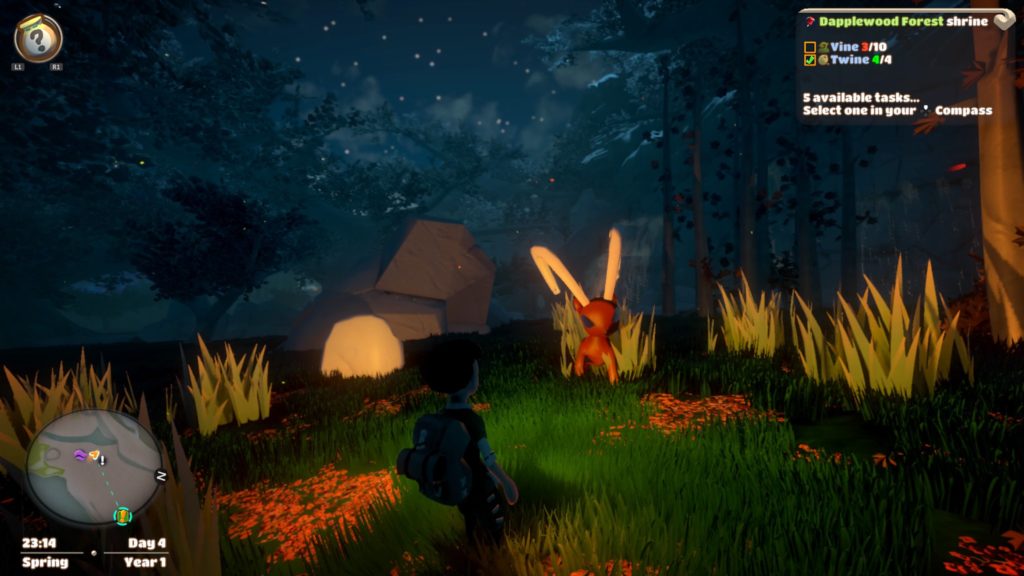
Things look just as great when you hit night time. The sky grows dawk, constellations fill it, and the player’s character breaks out a torch to give some local dynamic lighting around. At the same time, the music drops in intensity, and you really feel the encroachment of night time around you.
The core gameplay itself is built around an effective set of collection and crafting quests. The main line is pretty straightforward, with a series of quests that basically lead you into visiting each area, collecting Sprite creatures to clear off the Murk attacking the island, and collecting parts to fix the Cloud Catcher from the title. By and large these serve as a way to get you to the towns that hold the various crafting type masters, and allow you to expand your repertoire or skills, which lead into further use through side quests. While there are some systems in place on the side dealing with farming, it’s not deep enough to serve as a long term distraction. This along with the nature of the side quests really starts becoming the main problem in exposing the larger issues with the core of the game’s systems.
The side quests take the core collect/craft mechanic of the main story line, and ramp it up to 11. The problem is that the crafting system in general is just not that good, and the collecting of resources in the environment is kind of a hassle.
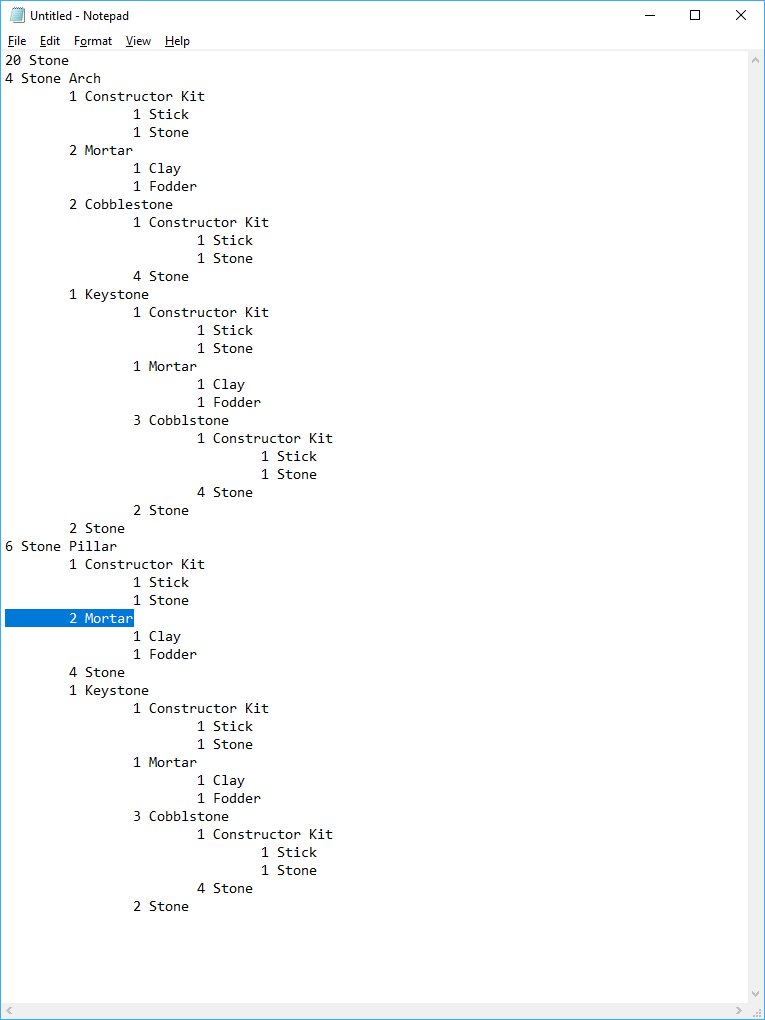
As an example, I created the above list to try and wrap my head around what I needed to craft a single bridge. At the highest level, this thing required somewhere around 300 stone, and a bunch of other various ingredients. The big problem is that stones can either be found solo on the ground, or in groups of 4 that can be mined out of a single boulder. Just from a length of time to collect, this then becomes rather time prohibitive. It also means hopping around to a ton of different areas in the crafting menu to craft individual pieces, then larger pieces, then larger pieces where each tab in was another level down in the crafting sequence. For me, there was also the fundamental problem of not really understanding why something that uses parts made out of stone then requires MORE stone. Even as it currently exists, being able to pick the high level item (say a stone arch), getting a total list of ALL resources needed to build it, then being able to one shot complete the project would have significantly improved the experience, as opposed to the current mess of crafting large items.
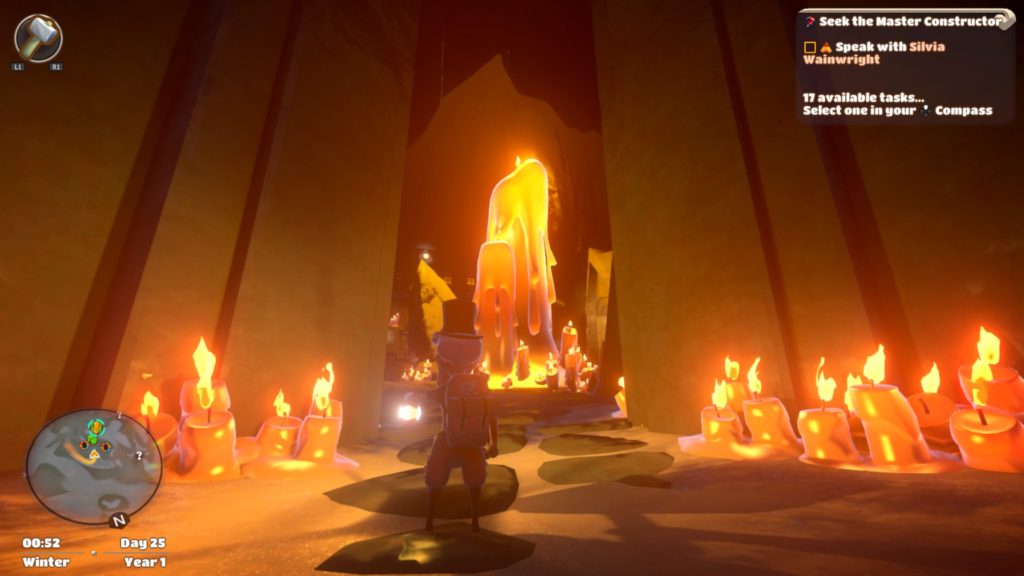
End of the day, the main reason why this was not another entry into Shelved It has more to do with the fact that the game was abrupt in finishing, and I wanted to see what else the environment team had put together. While the base that is there has potential, there’s too many fundamental problems with the crafting and collecting systems that are the core of the game to really consider this one worthy of high praise. On the other hand, given the lack of content, a few changes to the way these work could fairly quickly elevate this one to a pretty entertaining and relaxing adventure title. However, if you really want to see a gorgeous game, it may be worth taking a look at anyway.




